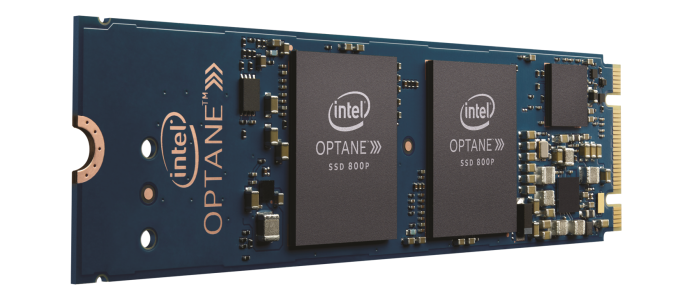
Original Link: https://www.anandtech.com/show/12512/the-intel-optane-ssd-800p-review
The Intel Optane SSD 800p (58GB & 118GB) Review: Almost The Right Size
by Billy Tallis on March 8, 2018 5:15 PM EST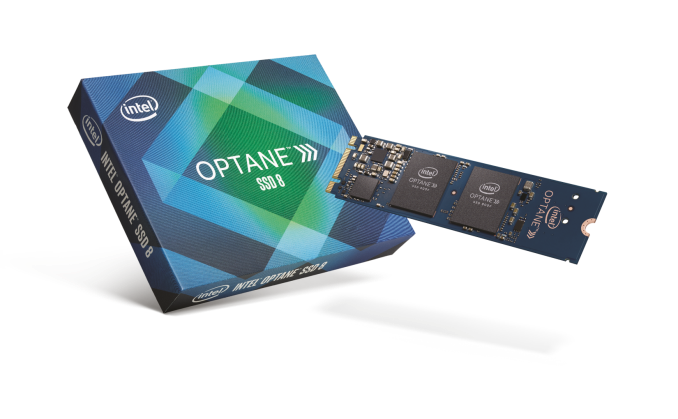
Intel's first Optane products hit the market almost a year ago, putting the much-awaited 3D XPoint memory in the hands of consumers. Today, Intel broadens that family with the Optane SSD 800p, pushing the Optane brand closer to the mainstream.
The new Optane SSD 800p is an M.2 NVMe SSD using Intel's 3D XPoint memory instead of flash memory. The 800p is based on the same hardware platform as last year's Optane Memory M.2 drive, which was intended primarily for caching purposes (but could also be used as a boot drive with a sufficiently small operating system). That means the 800p uses a PCIe 3 x2 link and Intel's first-generation 3D XPoint memory—but more of it, with usable capacities of 58GB and 118GB compared to just 16GB and 32GB from last year's Optane Memory. The PCB layout has been tweaked and the sticker on the drive no longer has a foil layer to act as a heatspreader, but the most significant design changes are to the drive firmware, which now supports power management including a low power idle state.
The low capacities of the Optane Memory product forced Intel to position it as a drive specifically for caching in front of a much larger hard drive, but the Optane SSD 800p has enough space to serve as primary storage. While 64GB-class drives have disappeared from current flash-based SSD product lines, there are still plenty of 128GB-class drives around. These drive capacities certainly aren't roomy, but they are sufficient to install an operating system and several applications. For users that don't install huge AAA video games or deal with large collections of videos and photos, the 118GB 800p might not even feel too confining.
For flash-based SSDs, tiny capacities should often be avoided because they have much worse performance than larger models. The relatively small 128Gbit (16GB) capacity of a single 3D XPoint die means the Optane SSD avoids the limited parallelism that small flash-based drives suffer from, and the performance of a single 3D XPoint die is high enough that not much parallelism is needed to begin with.
| Intel Optane SSD Specifications | ||||
| Model | Optane SSD 800p | Optane Memory | ||
| Capacity | 118 GB | 58 GB | 32 GB | 16 GB |
| Form Factor | M.2 2280 B+M key | M.2 2280 B+M key | ||
| Interface | PCIe 3.0 x2 | PCIe 3.0 x2 | ||
| Protocol | NVMe 1.1 | NVMe 1.1 | ||
| Controller | Intel | Intel | ||
| Memory | 128Gb 20nm Intel 3D XPoint | 128Gb 20nm Intel 3D XPoint | ||
| Sequential Read | 1450 MB/s | 1350 MB/s | 900 MB/s | |
| Sequential Write | 640 MB/s | 290 MB/s | 145 MB/s | |
| Random Read | 250k IOPS | 240k IOPS | 190k IOPS | |
| Random Write | 140k IOPS | 65k IOPS | 35k IOPS | |
| Read Latency | 6.75 µs | 7 µs | 8 µs | |
| Write Latency | 18µs | 18µs | 30 µs | |
| Active Power | 3.75 W | 3.5 W | 3.5 W | |
| Idle Power | 8 mW | 8 mW | 1 W | 1 W |
| Endurance | 365 TB | 365 TB | 182.5 TB | 182.5 TB |
| Warranty | 5 years | 5 years | ||
| Launch Date | March 2018 | April 2017 | ||
| Launch MSRP | $199 | $129 | $77 | $44 |
The higher capacities that the Optane SSD 800p offers over the Optane Memory also allow for much higher write performance, which was the biggest weakness of Optane Memory. Still, this only brings the 800p up to performance levels slightly faster than SATA, with sequential write performance rated at 640 MB/s and 4kB random write at 140k IOPS. Read speeds are slightly faster than the 32GB Optane Memory and also look poor compared to flash-based SSDs, but Intel is specifying this performance at a queue depth of four, which is far lower than what most flash-based SSDs need to hit their peak throughput.
The addition of a low-power sleep state brings the idle power rating of the 800p down to just 8mW, compared to the 1W rating on the smaller Optane Memory modules. The endurance rating for both capacities is 200 GB/day for the five-year warranty period. Given the small capacity of the drives, this works out to 1.7 or 3.4 drive writes per day, which is considerably higher than normal for consumer SSDs.
The capacities of 58GB and 118GB look odd compared to the more usual amounts like 120GB or 128GB commonly seen for flash-based SSDs. The reason the 800p has slightly reduced capacity is that a 3D XPoint die's actual capacity really matches the nominal 128Gb, whereas NAND flash incorporates extra space above the nominal capacity to allow for error correction and wear leveling. For the Optane Memory, the difference between the power of two definition of 32GB and the traditional drive manufacturer's definition of 32GB provided sufficient space, but the 800p's metadata and error correction requires a bit more usable space be taken.
Pricing for the Intel Optane SSD 800p is similar on a $/GB basis to the Optane Memory, which is now significantly cheaper than the launch prices from last year. However, this still leaves the 800p as the most expensive consumer SSD on the market on both a capacity and per GB basis, with the 58GB model exceeding $2/GB. Even the ultra-high-end 900p is cheaper per GB than the 800p.
The Competition:
There aren't any close competitors to the Optane SSD 800p. Intel's Optane SSD 900p is a consumer-focused derivative of their enterprise Optane SSD DC P4800X and inherits its high power consumption and the large PCIe add-in card or U.2 form factors. The existing Optane Memory M.2 modules are closely related to the Optane SSD 800p, but their low capacities prevent them from being used for the same purposes.
Among flash-based SSDs, there are some current-generation 128GB-class NVMe SSDs but no 64GB-class drives. The small flash-based SSDs are all relatively low-end and far cheaper per GB than the Optane SSDs. The high-end NVMe SSDs that roughly match the 800p on price tend to have four times the capacity.
For this review, we are comparing the 800p against Intel's other Optane products and against a variety of flash-based NVMe SSDs ranging from entry-level drives to the premium Samsung 960 PRO.
Intel also sent us four of the 118GB model, so for the curious we have some benchmark results from using them in RAID. For those tests, the Optane 800p M.2 modules were installed in an ASRock Ultra Quad M.2 card and tested in our enterprise SSD test system, using Windows 10 and Intel's Virtual RAID on CPU (VROC) drivers. That enterprise test system includes all the latest firmware and OS patches for the Spectre and Meltdown vulnerabilities, so those test results reflect the overhead of those mitigations in addition to the overhead of the NVMe RAID software. The single-drive test results were all recorded on our usual consumer SSD test system that has not received any firmware or OS patches for the Spectre and Meltdown vulnerabilities.
| AnandTech Enterprise SSD Test System | |
| System Model | Intel Server R2208WFTZS |
| CPU | 2x Intel Xeon Gold 6154 (18C, 3.0GHz) |
| Motherboard | Intel S2600WFT |
| Chipset | Intel C624 |
| Memory | 192GB total, Micron DDR4-2666 16GB modules |
| Software | Windows 10 x64, version 1709 |
| AnandTech 2017/2018 Consumer SSD Testbed | |
| CPU | Intel Xeon E3 1240 v5 |
| Motherboard | ASRock Fatal1ty E3V5 Performance Gaming/OC |
| Chipset | Intel C232 |
| Memory | 4x 8GB G.SKILL Ripjaws DDR4-2400 CL15 |
| Graphics | AMD Radeon HD 5450, 1920x1200@60Hz |
| Software | Windows 10 x64, version 1709 |
| Linux kernel version 4.14, fio version 3.1 | |
- Thanks to Intel for the Xeon E3 1240 v5 CPU
- Thanks to ASRock for the E3V5 Performance Gaming/OC
- Thanks to G.SKILL for the Ripjaws DDR4-2400 RAM
- Thanks to Corsair for the RM750 power supply, Carbide 200R case, and Hydro H60 CPU cooler
- Thanks to Quarch for the XLC Programmable Power Module and accessories
- Thanks to StarTech for providing a RK2236BKF 22U rack cabinet.
Caveat: Many of our current SSD tests were not designed with tiny drives in mind. The results for the 32GB Optane Memory and the 58GB Optane SSD 800p do not represent exactly the same workload performed by the larger drives. Several of our synthetic benchmarks of sustained performance default to using a 64GB span of the drive, and in the case of the smaller drives, the test simply uses the entire drive. Likewise, the workloads represented by the ATSB Destroyer and Heavy tests don't actually fit on such small drives. The small drives still perform the same volume of reads and writes, but the block addresses in the I/O trace that are beyond the capacity of the drive are wrapped around to fit. The ATSB Destroyer and Heavy results for those two drives could be viewed as representative of the drive's performance as a cache device, but they do not include the effect of cache misses that would be present in a real tiered storage configuration.
AnandTech Storage Bench - The Destroyer
The Destroyer is an extremely long test replicating the access patterns of very IO-intensive desktop usage. A detailed breakdown can be found in this article. Like real-world usage, the drives do get the occasional break that allows for some background garbage collection and flushing caches, but those idle times are limited to 25ms so that it doesn't take all week to run the test. These AnandTech Storage Bench (ATSB) tests do not involve running the actual applications that generated the workloads, so the scores are relatively insensitive to changes in CPU performance and RAM from our new testbed, but the jump to a newer version of Windows and the newer storage drivers can have an impact.
We quantify performance on this test by reporting the drive's average data throughput, the average latency of the I/O operations, and the total energy used by the drive over the course of the test.
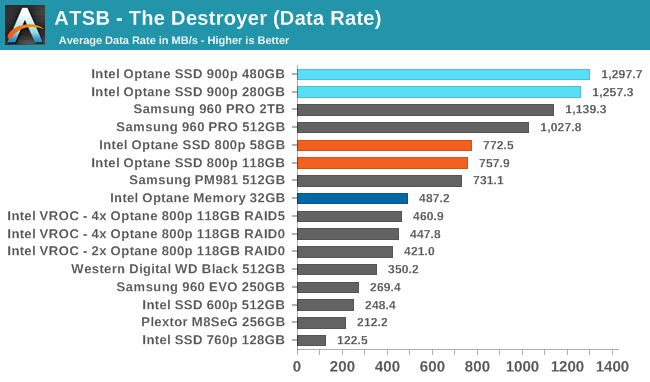
The average data rates from the Intel Optane SSD 800p on The Destroyer are comparable to some of the faster flash-based SSDs we've tested, but the 800p isn't as fast as the Samsung 960 PRO. Intel's VROC clearly doesn't help performance on this kind of test, and instead it just adds overhead.
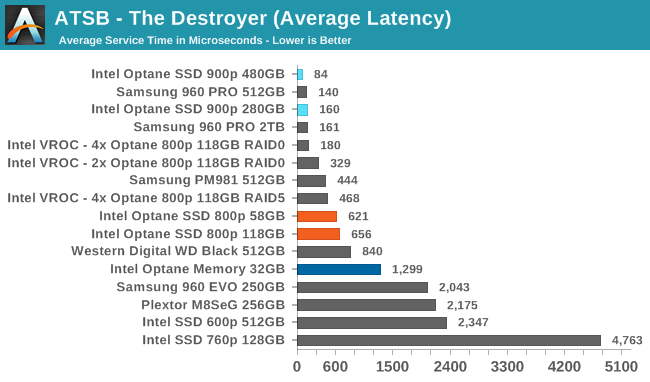
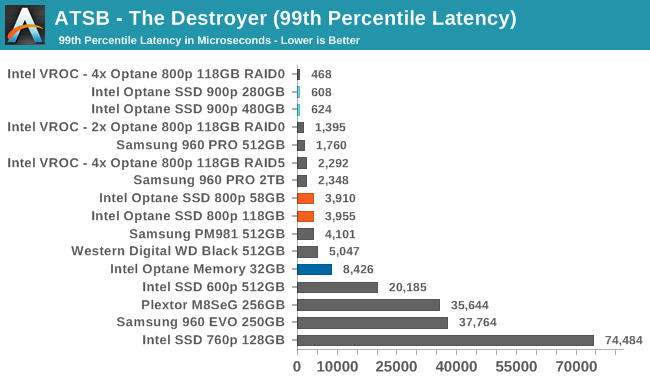
The average and 99th percentile latency scores of the Optane SSD 800p on The Destroyer are good, but don't beat the best flash-based SSDs and are far higher than the Optane 900p. Intel VROC seems to improve latency some even though it was detrimental to the average data rate.
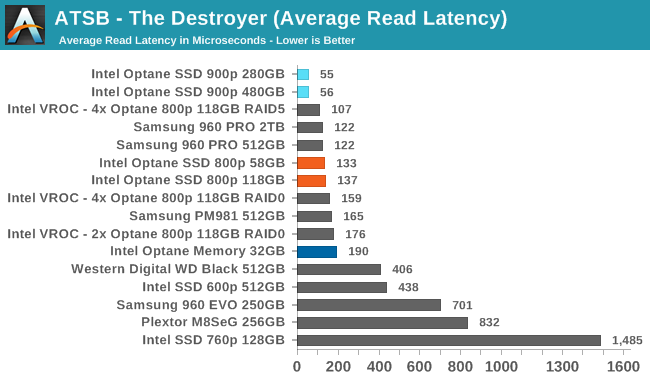
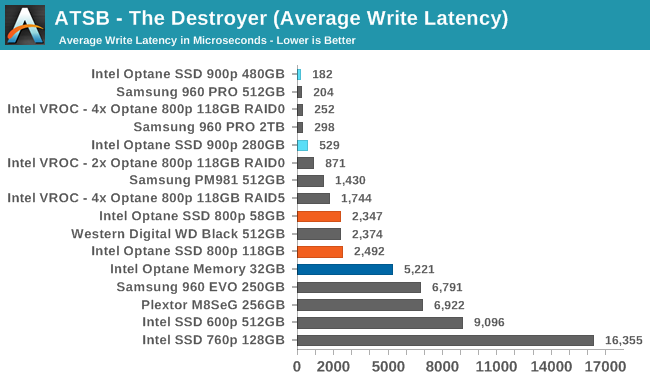
The average read latency of the 800p is more than twice as high as that of the 900p, and is higher than the Samsung 960 PRO. VROC RAID-0 adds a few more microseconds of read latency. The average write latency of the 800p is far worse than the 900p or high-end flash based SSDs, but VROC greatly improves the write latencies and the four-drive RAID-0 is comparable to the Optane SSD 900p.
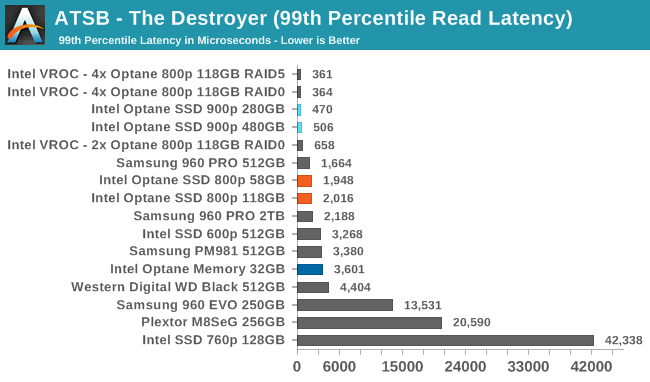
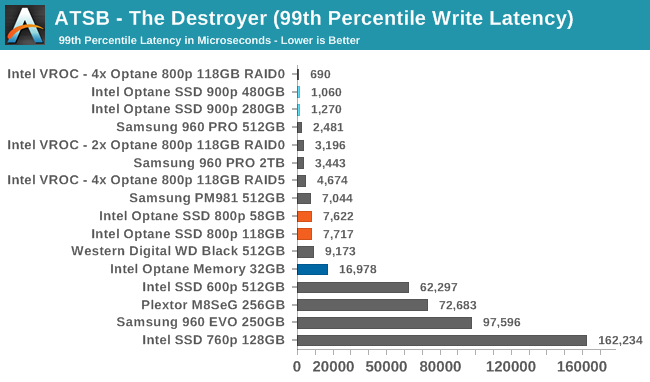
Intel's VROC helps significantly with the 99th percentile read and write latencies, taking the 800p from not quite high-end to beating a single 900p.
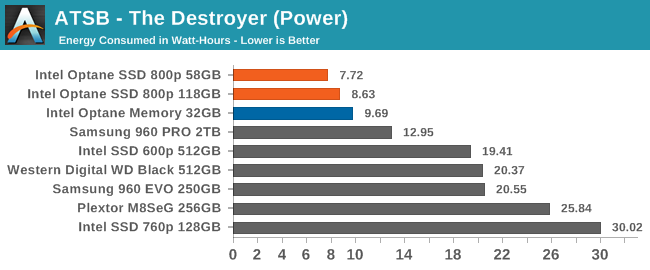
The energy usage of the Optane SSD 800p over the course of The Destroyer is far lower than that of any flash-based SSD. The 800p completes the test fairly quickly, and unlike the 900p it keeps power consumption reasonably low throughout the test. The low-end flash based SSDs can take more than twice as long to complete the test while drawing more power than the 800p.
AnandTech Storage Bench - Heavy
Our Heavy storage benchmark is proportionally more write-heavy than The Destroyer, but much shorter overall. The total writes in the Heavy test aren't enough to fill the drive, so performance never drops down to steady state. This test is far more representative of a power user's day to day usage, and is heavily influenced by the drive's peak performance. The Heavy workload test details can be found here. This test is run twice, once on a freshly erased drive and once after filling the drive with sequential writes.
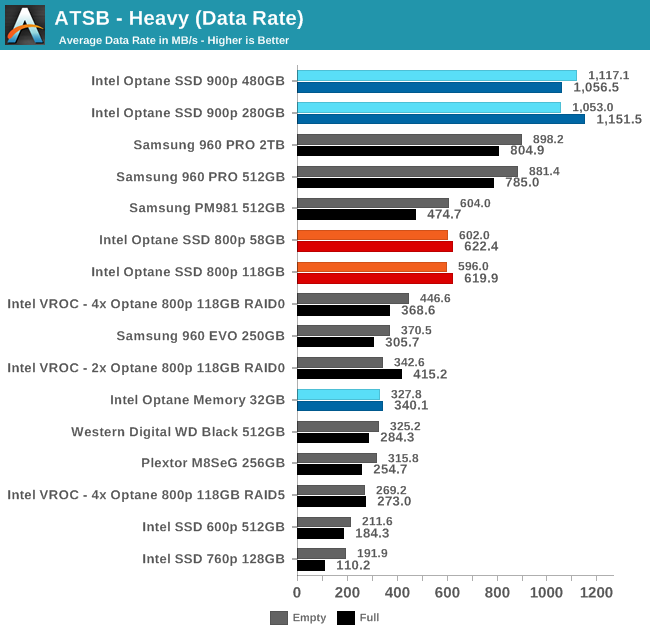
As with The Destroyer, the average data rate of the Intel Optane SSD 800p puts it near the top of the rankings, but behind the fastest flash-based SSDs and the Optane 900p. Intel's VROC again adds overhead that isn't worthwhile without the high queue depths of synthetic benchmarks.
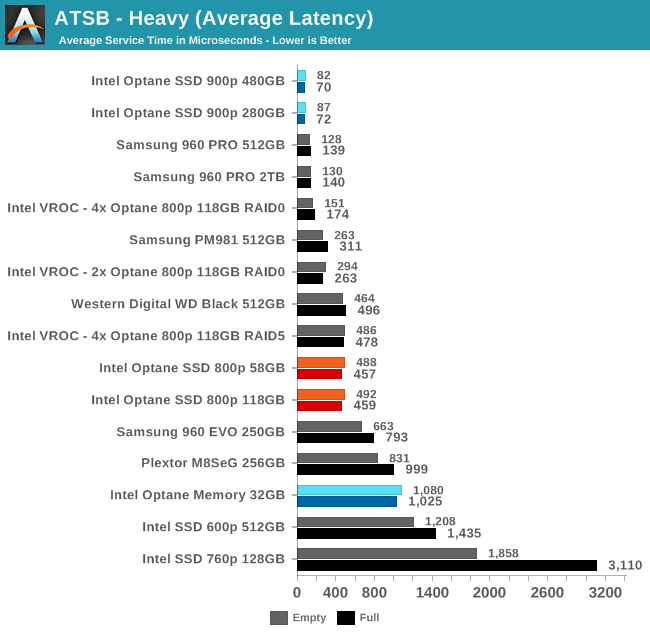
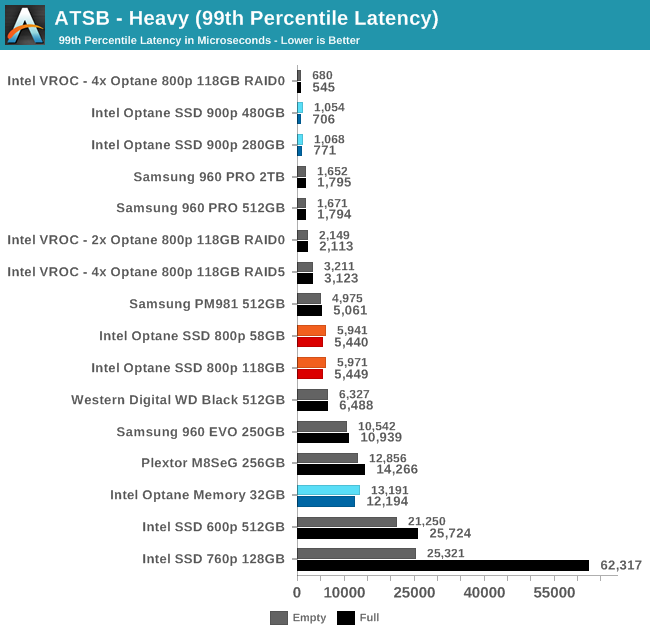
The average and 99th percentile latencies of the Optane SSD 800p on the Heavy test are better than any of the low-end NVMe SSDs, but it is only in RAID that the latency drops down to the level of the best flash-based SSDs and the 900p.
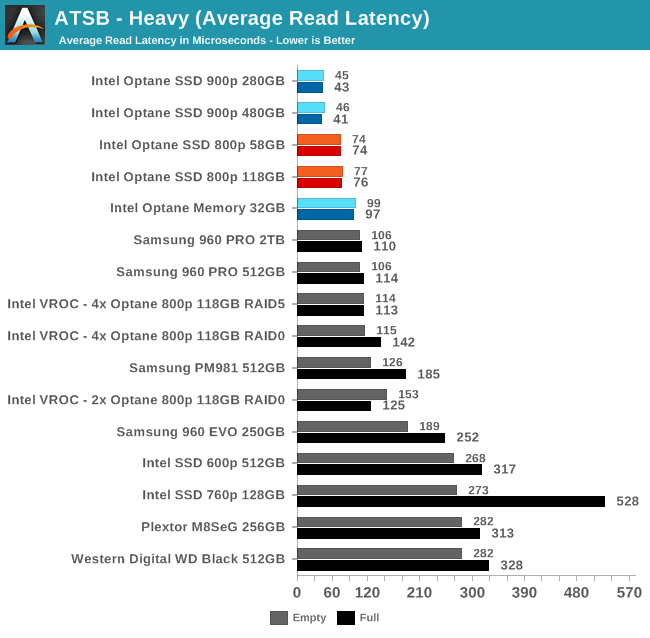
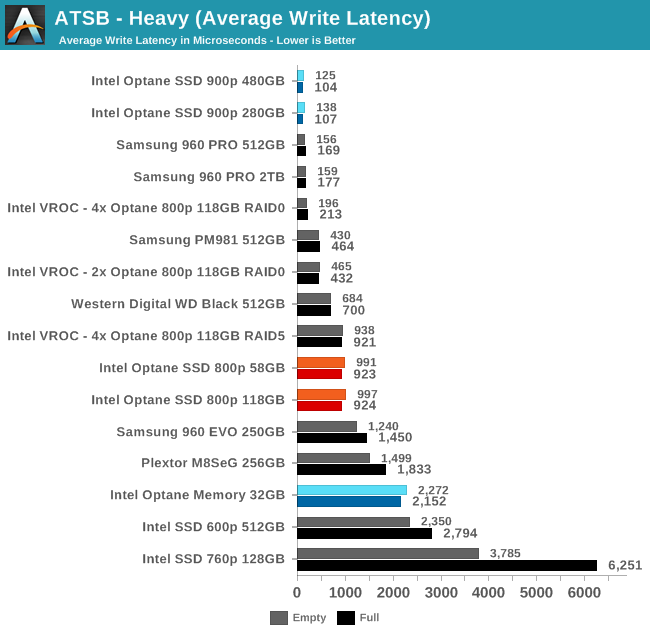
The average read latency of the Optane SSD 800p ranks second behind the 900p. VROC adds enough overhead that the RAID configurations end up having slightly higher average read latencies than the Samsung 960 PRO. For the average write latencies, VROC is far more useful, and helps the 800p make up for the lack of a write cache.
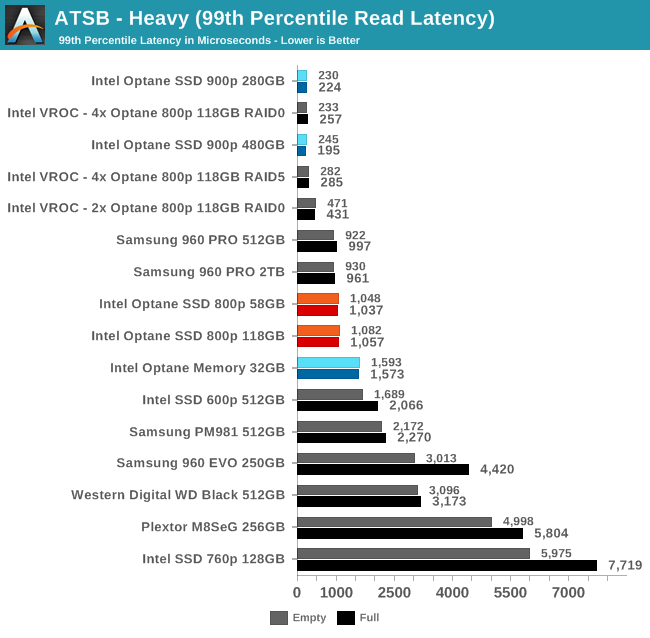
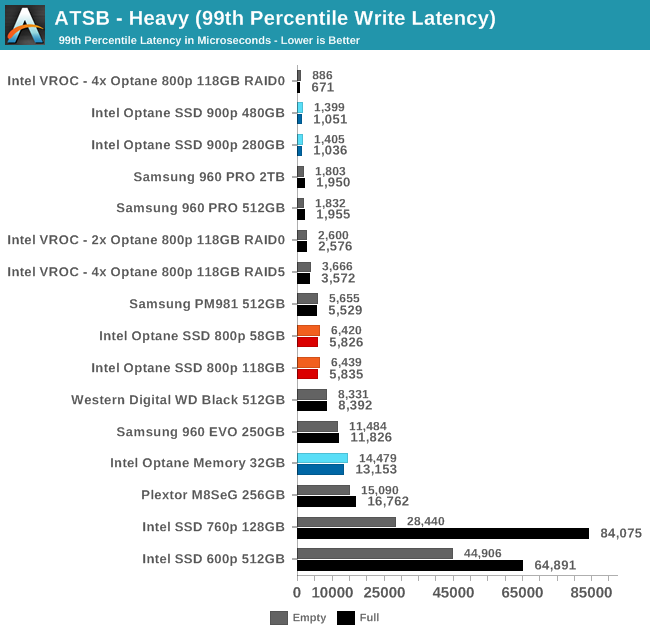
The 99th percentile read and write latencies of the 800p RAID configurations are on par with the 900p, but the individual drives have slightly worse QoS than the Samsung 960 PRO.
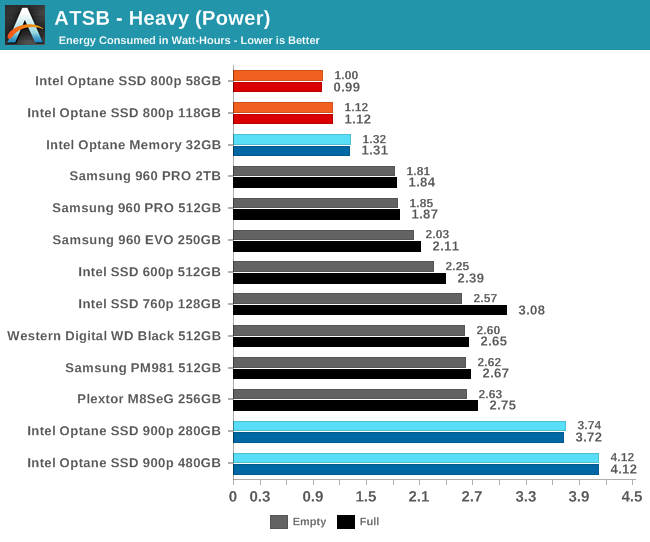
The 800p again leads in energy usage thanks to its high overall performance without the high baseline power consumption of the 900p. The budget NVMe SSDs all use at least twice as much energy over the course of the test, and the Samsung 960 PRO is closer to the budget drives than to the 800p.
AnandTech Storage Bench - Light
Our Light storage test has relatively more sequential accesses and lower queue depths than The Destroyer or the Heavy test, and it's by far the shortest test overall. It's based largely on applications that aren't highly dependent on storage performance, so this is a test more of application launch times and file load times. This test can be seen as the sum of all the little delays in daily usage, but with the idle times trimmed to 25ms it takes less than half an hour to run. Details of the Light test can be found here. As with the ATSB Heavy test, this test is run with the drive both freshly erased and empty, and after filling the drive with sequential writes.
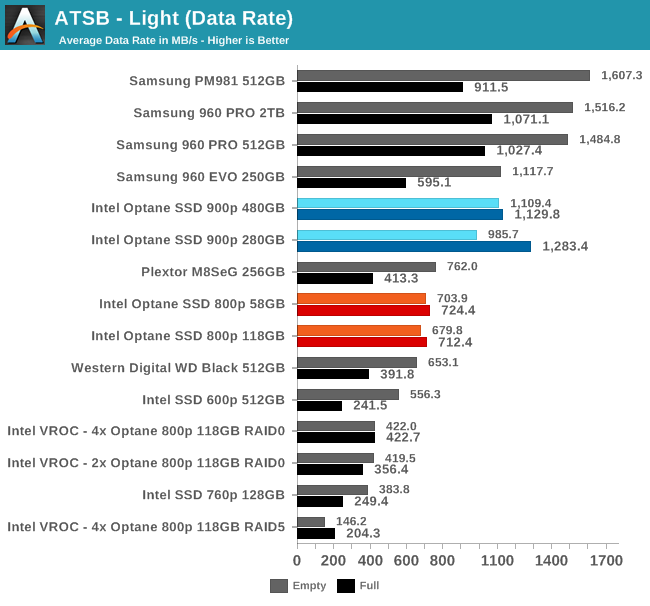
The Light test allows the flash-based SSDs to make the most of their write caching throughout the test, so even the 900p is surpassed by the Samsung NVMe SSDs while the 800p ranks with the budget NVMe drives. When the drives are full and the flash-based SSDs get bogged down with garbage collection, the 900p comes out ahead but the 800p still trails behind the Samsung 960 PRO. The VROC configuration look especially poor in terms of average data rate, and the RAID-5 performance is surprisingly low.
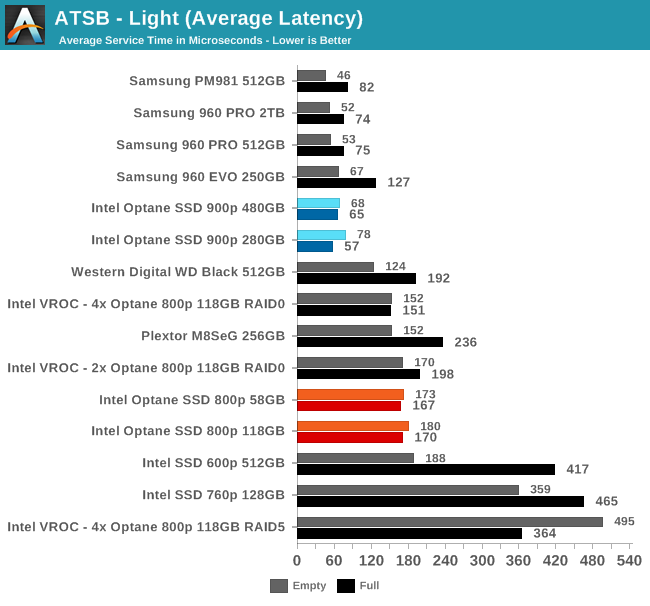
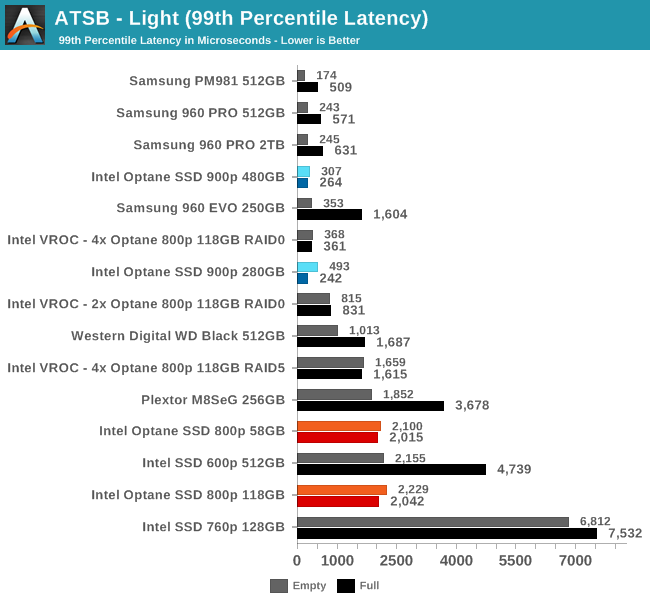
The Optane SSD 800p scores in the middle tier of SSDs for average latency on the Light test, and VROC RAID is no help here. VROC does help with the 99th percentile latencies, but without it the 800p looks like a low-end drive that merely doesn't have garbage collection problems.
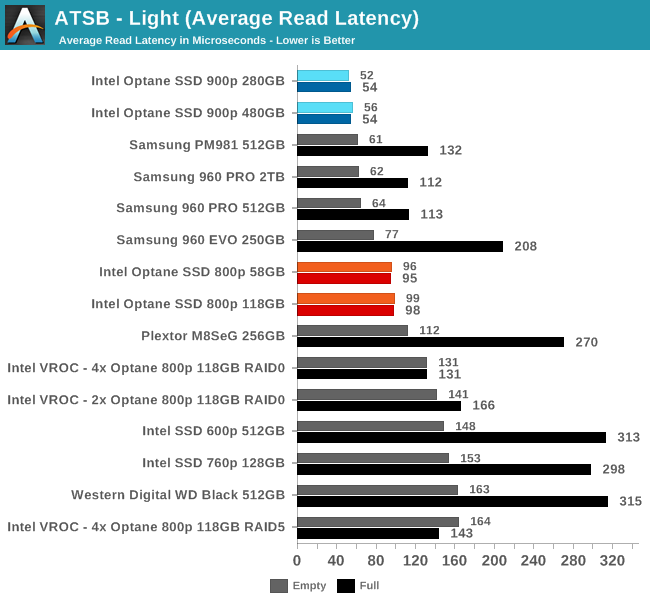
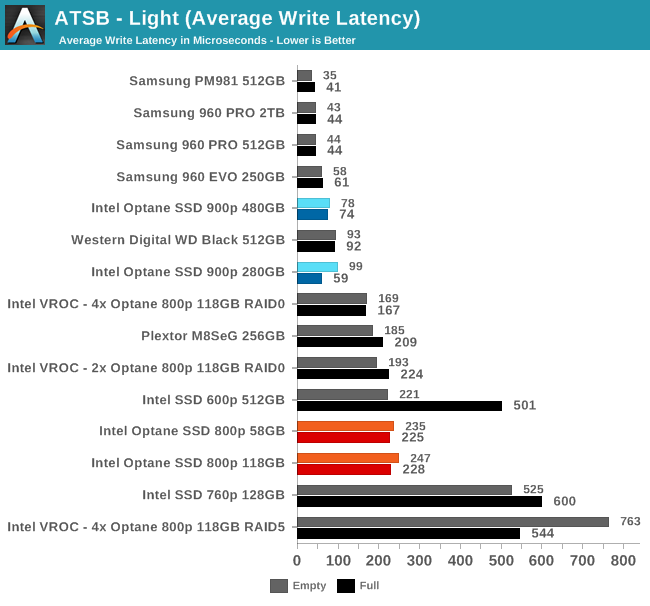
The average read latencies from the 800p are almost twice as high as those from the 900p, and VROC's overhead only makes it worse. The average write latencies of the 900p aren't as good as the best flash-based SSDs, and the write latency of the 800p is well over twice that of the 900p.
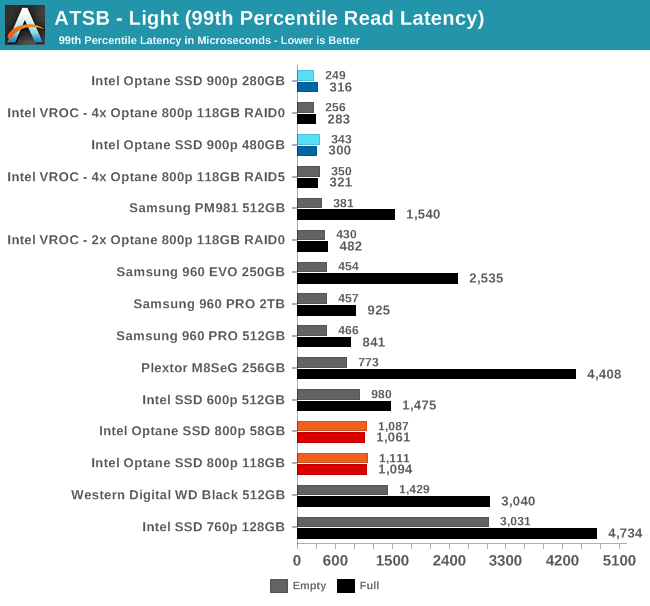
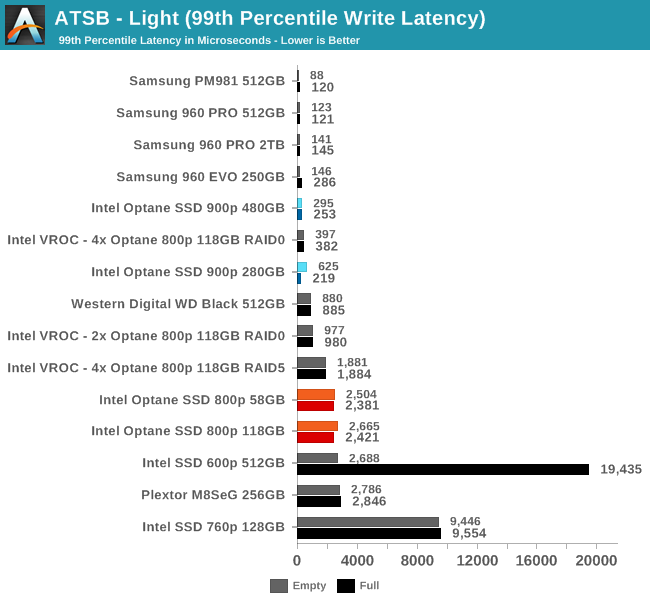
The 99th percentile latency scores from the 800p are not great, but at least the drives perform just as well when full. Small flash-based drives are the most heavily affected when constant garbage collection becomes necessary.
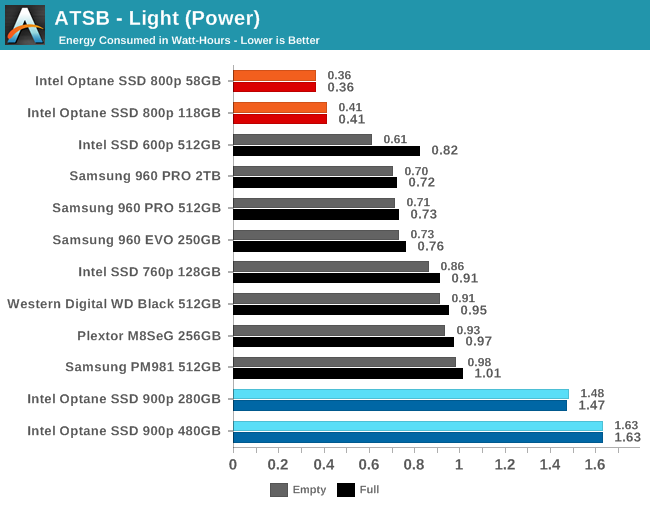
The Light test is a fairly short run with any of these drives, but the 800p still manages to return extremely good power usage numbers that are well ahead of any flash-based NVMe SSD.
Random Read Performance
Our first test of random read performance uses very short bursts of operations issued one at a time with no queuing. The drives are given enough idle time between bursts to yield an overall duty cycle of 20%, so thermal throttling is impossible. Each burst consists of a total of 32MB of 4kB random reads, from a 16GB span of the disk. The total data read is 1GB.
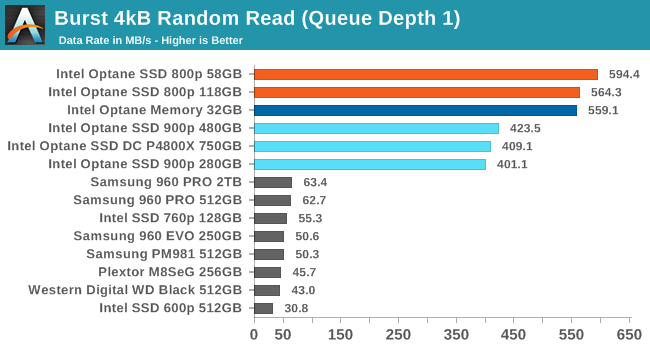
Like the Optane Memory M.2, the Optane SSD 800p has extremely high random read performance even at QD1. The M.2 drives even have a substantial lead over the much larger and more power-hungry 900p and its enterprise counterpart P4800X. Even the best flash-based SSDs are almost an order of magnitude slower.
Our sustained random read performance is similar to the random read test from our 2015 test suite: queue depths from 1 to 32 are tested, and the average performance and power efficiency across QD1, QD2 and QD4 are reported as the primary scores. Each queue depth is tested for one minute or 32GB of data transferred, whichever is shorter. After each queue depth is tested, the drive is given up to one minute to cool off so that the higher queue depths are unlikely to be affected by accumulated heat build-up. The individual read operations are again 4kB, and cover a 64GB span of the drive.
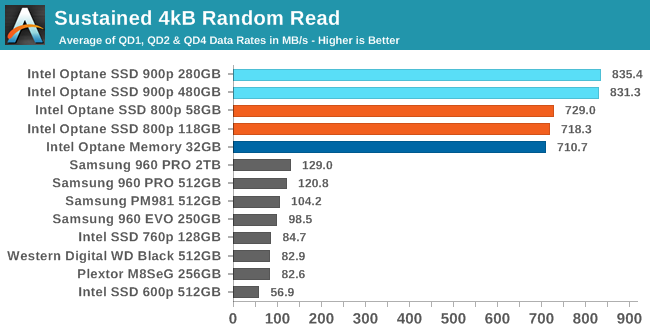
The Optane SSDs continue to dominate on the longer random read test, though the addition of higher queue depths allows the 900p to pull ahead of the 800p.
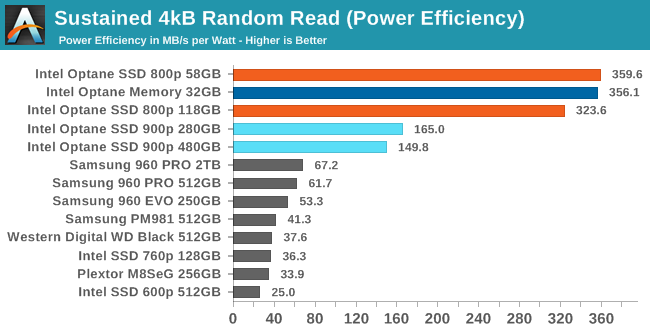
With extremely high performance but lacking the high power draw of the enterprise-class 900p, the Optane SSD 800p is by far the most power efficient at performing random reads.
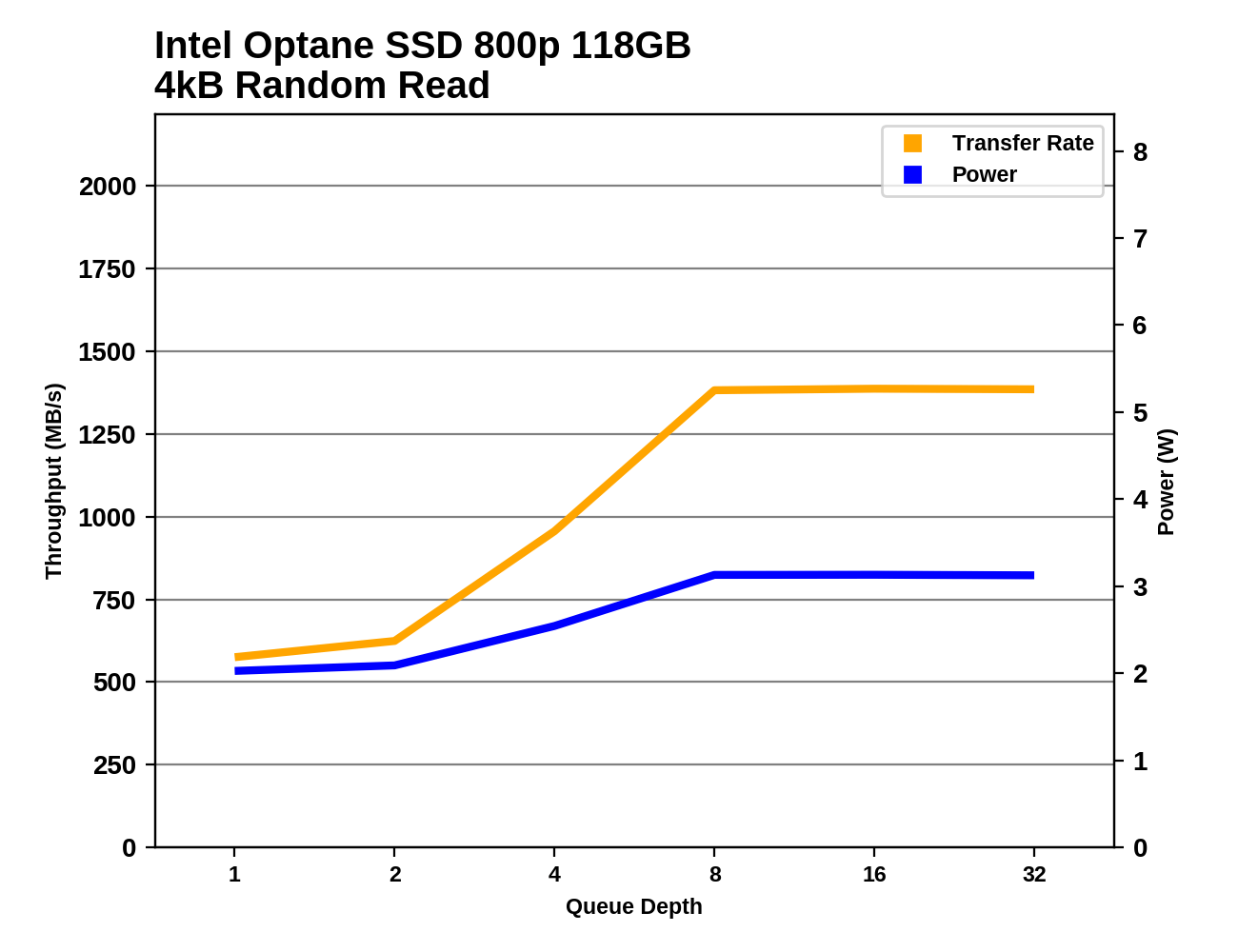 |
|||||||||
The Optane SSD 800p starts out in the lead at QD1, but its performance is overtaken by the 900p at all higher queue depths. The flash-based SSDs have power consumption that is comparable to the 800p, but even at QD32 Samsung's 960 PRO hasn't caught up to the 800p's random read performance.
Random Write Performance
Our test of random write burst performance is structured similarly to the random read burst test, but each burst is only 4MB and the total test length is 128MB. The 4kB random write operations are distributed over a 16GB span of the drive, and the operations are issued one at a time with no queuing.
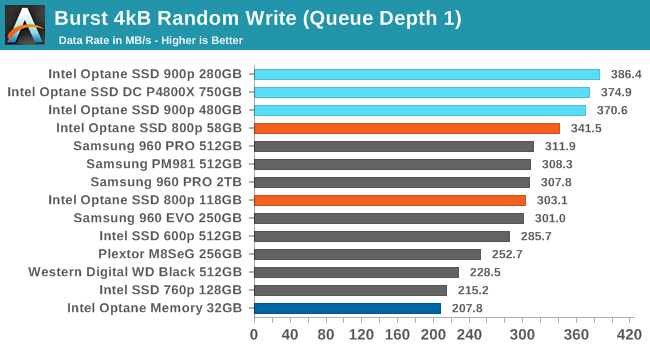
Flash-based SSDs can cache and combine write operations, so they are able to offer random write performance close to that of the Optane SSDs, which do not perform any significant caching. Where the 32GB Optane Memory offered relatively poor burst random write performance, the 800p is at least as fast as the best flash-based SSDs.
As with the sustained random read test, our sustained 4kB random write test runs for up to one minute or 32GB per queue depth, covering a 64GB span of the drive and giving the drive up to 1 minute of idle time between queue depths to allow for write caches to be flushed and for the drive to cool down.
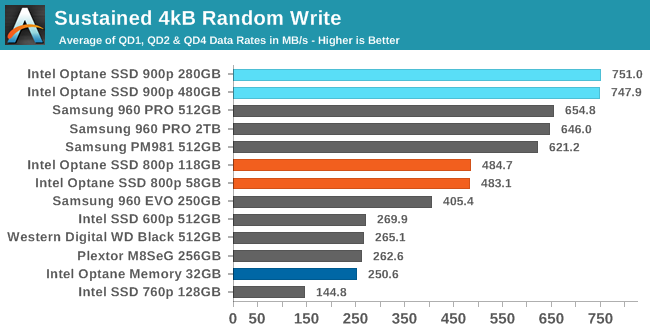
When higher queue depths come into play, the write caching ability of Samsung's high-end NVMe SSDs allows them to exceed the Optane SSD 800p's random write speed, though the 900p still holds on to the lead. The 800p's improvement over the Optane Memory is even more apparent with this longer test.
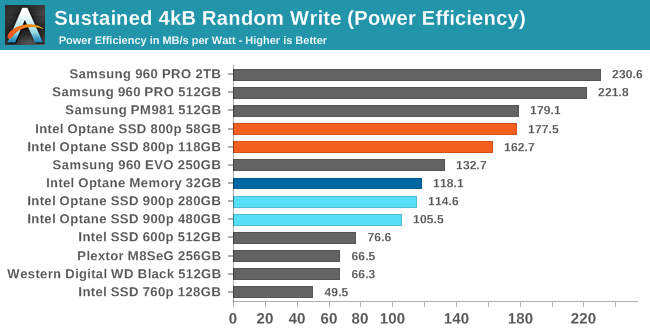
The power efficiency of the 800p during random writes is pretty good, though Samsung's top drives are better still. The Optane Memory lags behind on account of its poor performance, and the 900p ranks below that because it draws so much power in the process of delivering top performance.
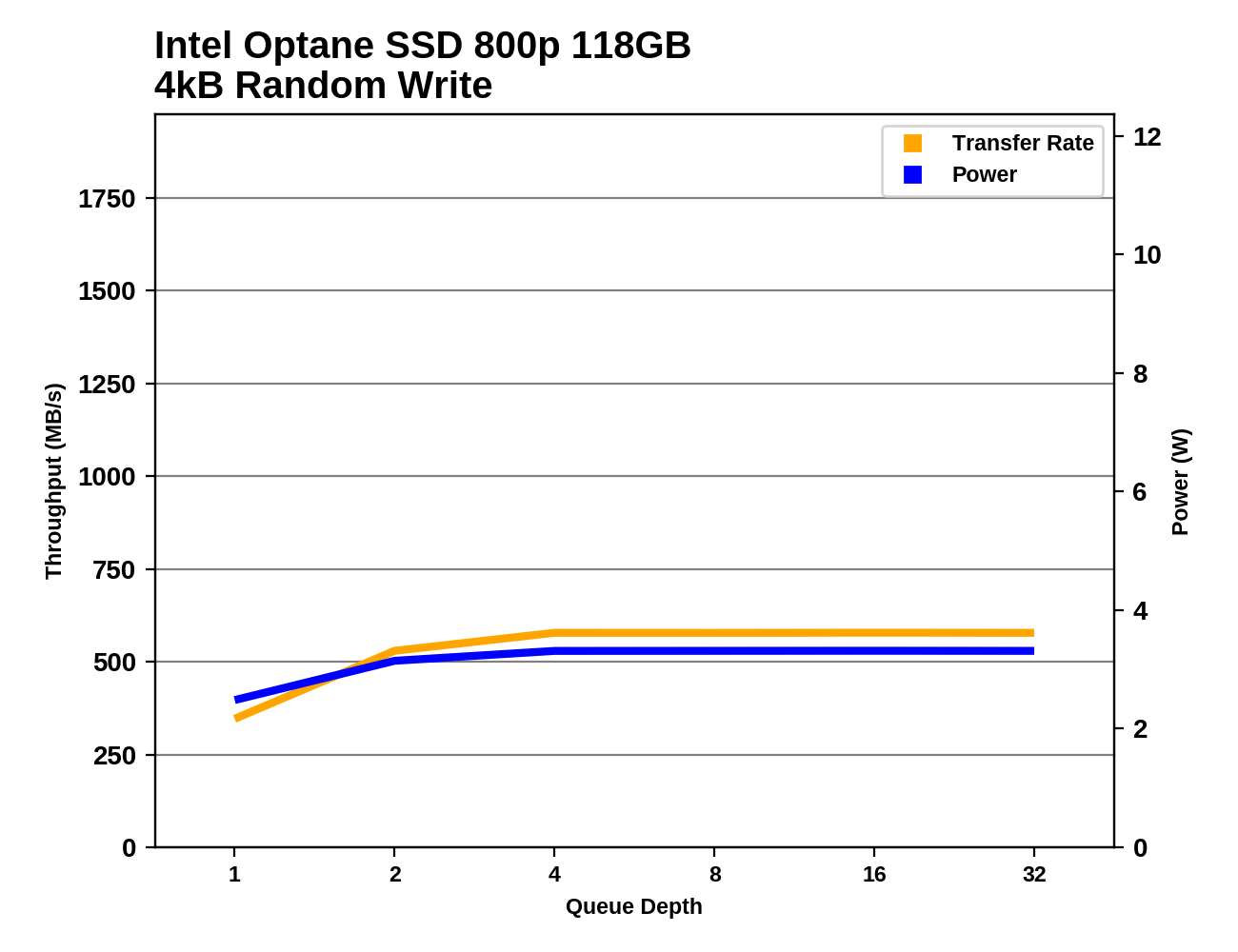 |
|||||||||
The Samsung 960 PRO and the Intel Optane SSD 900p show off at high queue depths thanks to the high channel counts of their controllers. The Optane SSD 800p doesn't have much room for performance to scale beyond QD2.
Sequential Read Performance
Our first test of sequential read performance uses short bursts of 128MB, issued as 128kB operations with no queuing. The test averages performance across eight bursts for a total of 1GB of data transferred from a drive containing 16GB of data. Between each burst the drive is given enough idle time to keep the overall duty cycle at 20%.
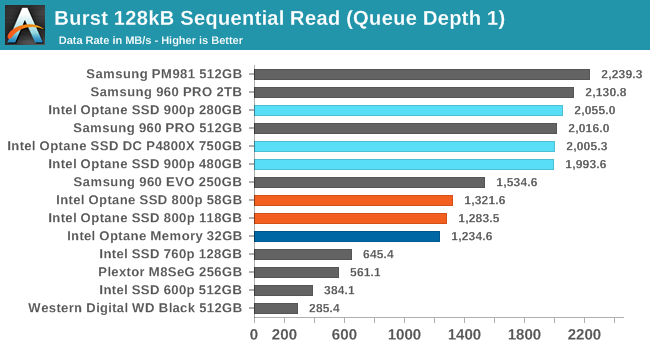
The QD1 burst sequential read performance of the Intel Optane SSD 800p is close to their rated maximum throughput, but they are far behind the 900p and high-end Samsung drives that actually need more than two PCIe lanes.
Our test of sustained sequential reads uses queue depths from 1 to 32, with the performance and power scores computed as the average of QD1, QD2 and QD4. Each queue depth is tested for up to one minute or 32GB transferred, from a drive containing 64GB of data.
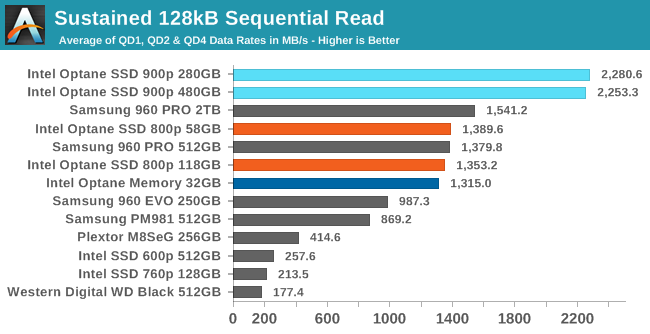
On the longer sequential read test, the Samsung NVMe SSDs fall down to the level of the Optane SSD 800p, because the flash-based SSDs are slowed down by some of the data fragmentation left over from the random write test. The Optane SSDs performed those writes as in-place modifications and thus didn't incur any fragmentation. This leaves the Samsung 960 PRO 2TB barely faster than the 800p, while the 900p runs away with its lead.
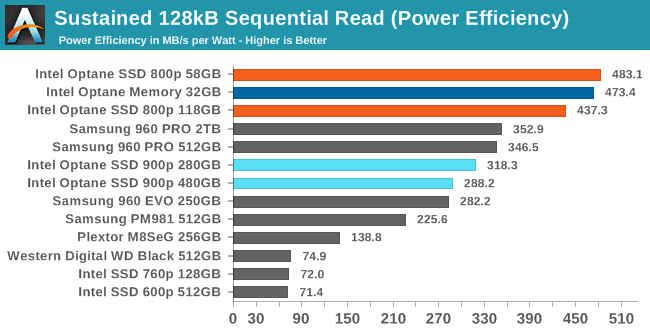
The Optane SSD 800p has the clear lead in power efficiency, as its second-tier performance comes with far lower power consumption than the top-performing 900p.
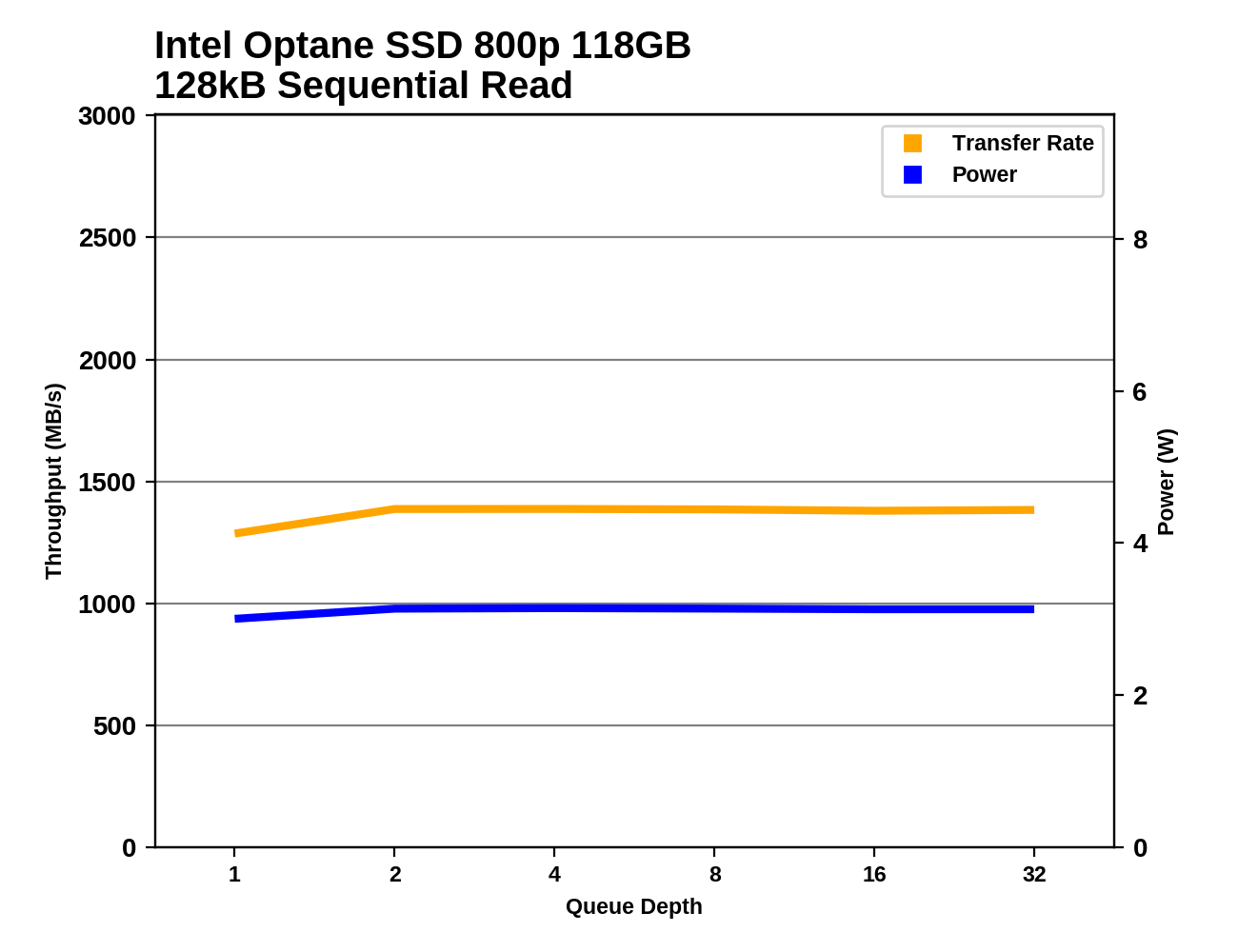 |
|||||||||
There are no big surprises with the queue depth scaling; the 800p's sequential reads are slightly faster at QD2 than QD1, but there's no further improvement beyond that. The 800p is easily staying within its 3.75 W rated maximum power draw.
Sequential Write Performance
Our test of sequential write burst performance is structured identically to the sequential read burst performance test save for the direction of the data transfer. Each burst writes 128MB as 128kB operations issued at QD1, for a total of 1GB of data written to a drive containing 16GB of data.
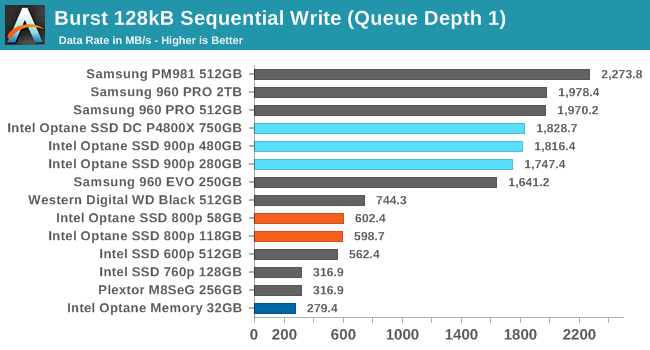
The burst sequential write speed of the Intel Optane SSD 800p is no better than the low-end flash-based NVMe SSDs. Without any write caching mechanism in the controller, the fundamental nature of 3D XPoint write speeds shows through. The 900p overcomes this by using a 7-channel controller, but that design doesn't fit within the M.2 form factor.
Our test of sustained sequential writes is structured identically to our sustained sequential read test, save for the direction of the data transfers. Queue depths range from 1 to 32 and each queue depth is tested for up to one minute or 32GB, followed by up to one minute of idle time for the drive to cool off and perform garbage collection. The test is confined to a 64GB span of the drive.
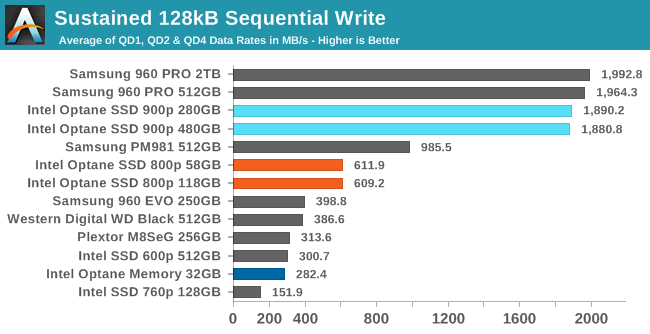
The Optane SSD 800p looks better on the sustained sequential write test, as all the TLC-based SSDs run out of SLC cache and slow down dramatically, while the Optane SSDs keep delivering the exact same performance.
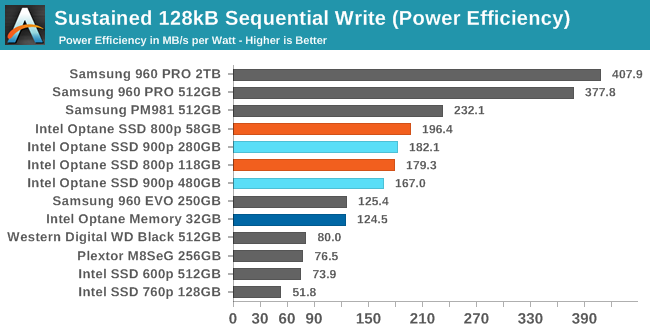
Despite their very different sequential write throughput, the Optane SSD 900p and 800p end up with very similar power efficiency on this test. The Samsung NVMe drives are even more efficient, but only the premium MLC-based 960 PRO has a large lead.
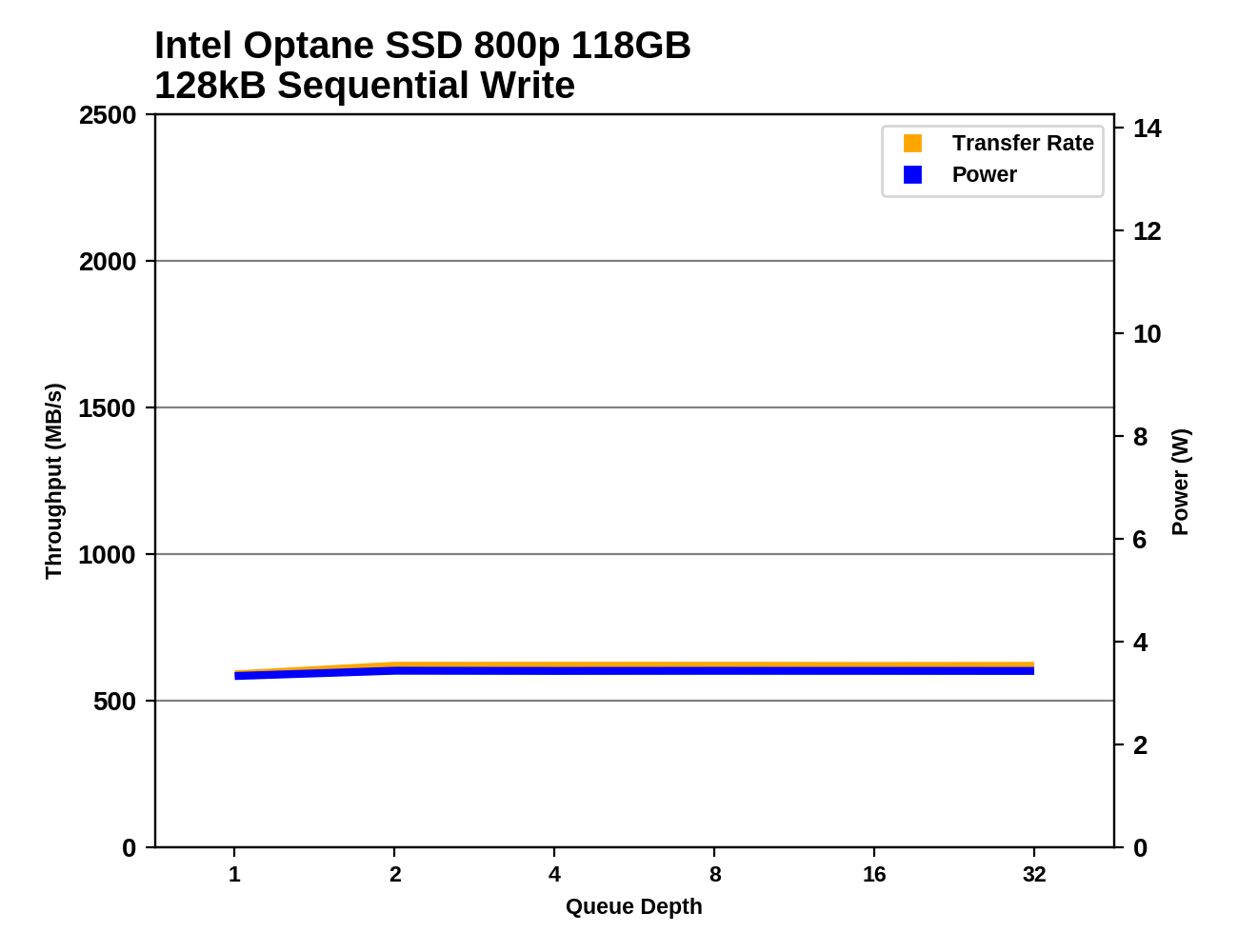 |
|||||||||
Almost all of the drives show no performance scaling with increasing queue depth, as large-block sequential writes can keep all the memory channels busy with only a little bit of buffering. The 900p needs at least two 128kB writes in flight to reach full throughput.
Mixed Random Performance
Our test of mixed random reads and writes covers mixes varying from pure reads to pure writes at 10% increments. Each mix is tested for up to 1 minute or 32GB of data transferred. The test is conducted with a queue depth of 4, and is limited to a 64GB span of the drive. In between each mix, the drive is given idle time of up to one minute so that the overall duty cycle is 50%.
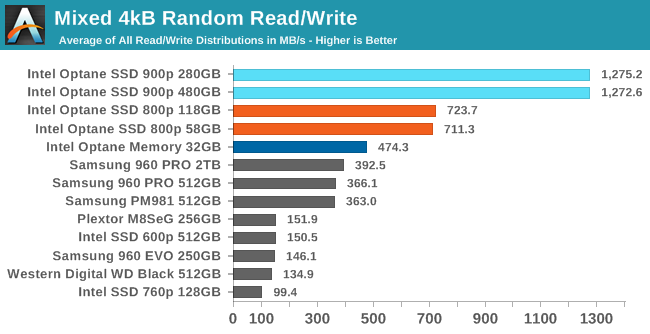
The Optane SSDs put even Samsung's best NVMe SSDs to shame on the mixed random I/O test. The 800p is a little more than half as fast as the 900p, which is plenty to put it far out of reach of the flash-based SSDs.
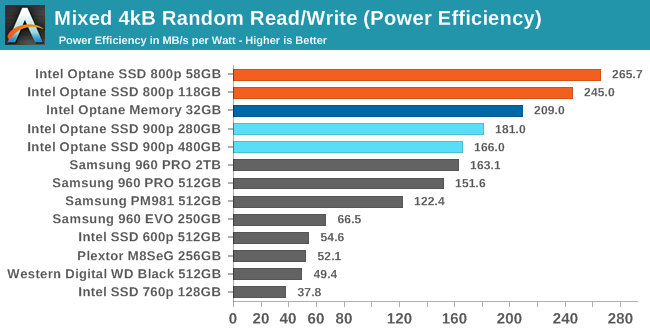
The Optane SSD 800p takes first place for power efficiency on the mixed random I/O test, with the 58GB model having a slight advantage over the 118GB due to the lower power consumption of operating half as many 3D XPoint dies. The flash-based SSDs come close to matching the efficiency of the Optane SSD 900p, but are far behind the 800p.
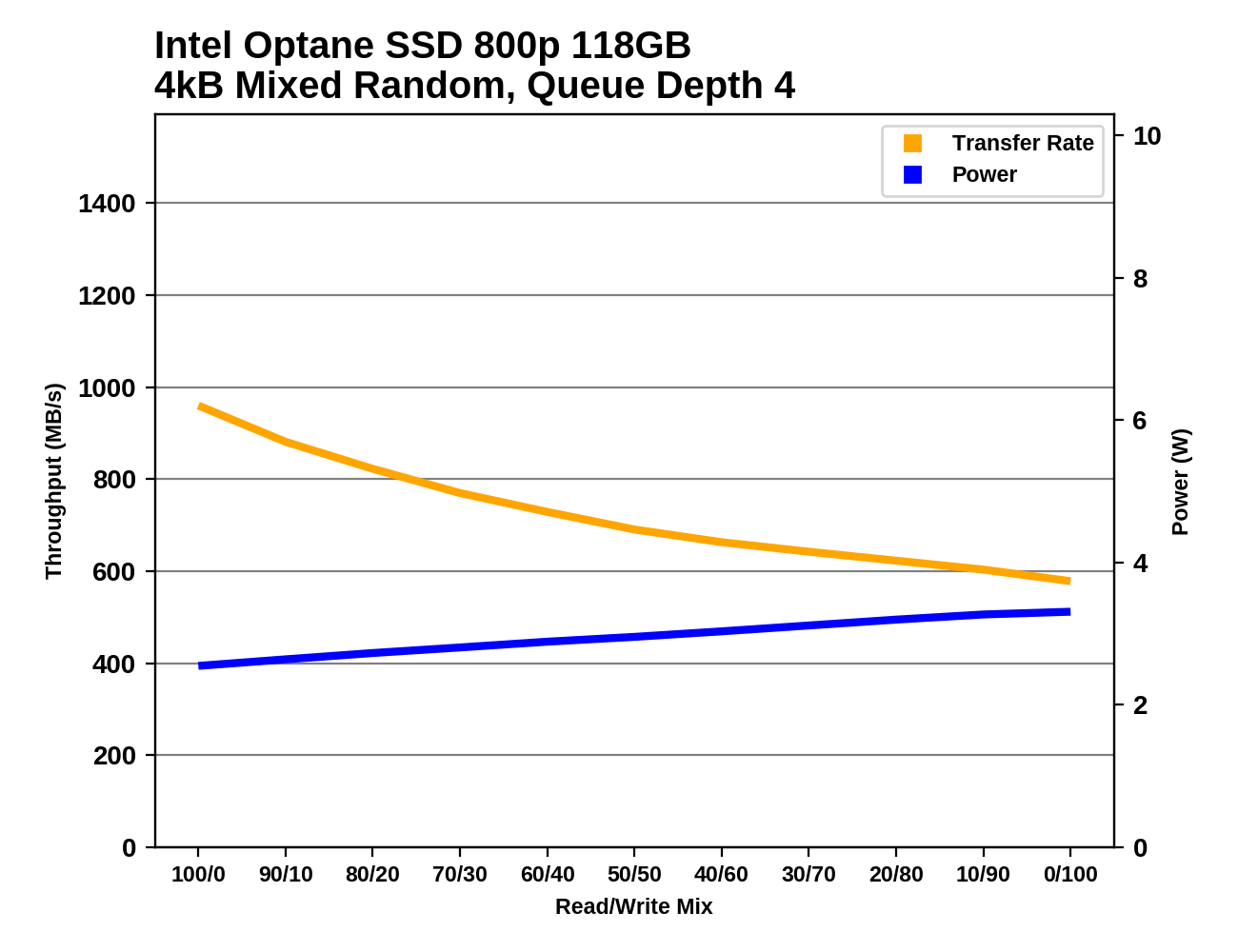 |
|||||||||
With no write buffering, the Optane SSDs show a steady decline in performance as the proportion of writes increases, with no spike in performance at the end as is typical of flash-based SSDs with aggressive write combining. The 800p shows a more pronounced reduction in performance than the 900p, while the 900p's power consumption climbs more.
Mixed Sequential Performance
Our test of mixed sequential reads and writes differs from the mixed random I/O test by performing 128kB sequential accesses rather than 4kB accesses at random locations, and the sequential test is conducted at queue depth 1. The range of mixes tested is the same, and the timing and limits on data transfers are also the same as above.
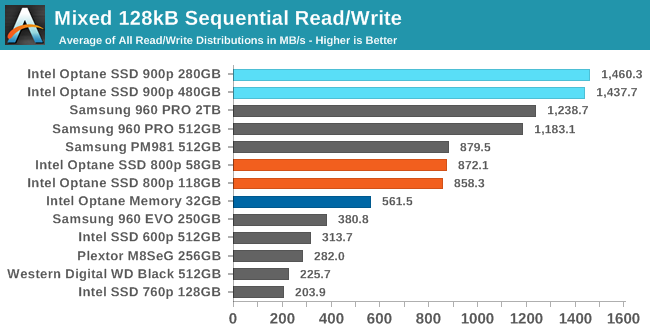
With only a PCIe x2 interface and sequential write speeds that only use a fraction of that bandwidth, the Optane SSD 800p is actually performing pretty well on the mixed sequential I/O test. The 800p has the same average performance as Samsung's fastest TLC SSD, and offers more than two thirds the performance of the Samsung 960 PRO.
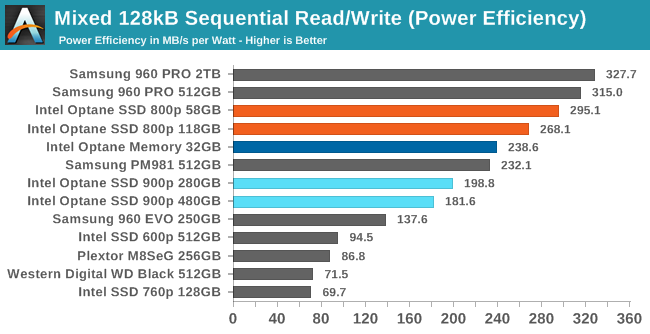
The power efficiency of the Intel Optane SSD 800p is second only to that of the Samsung 960 PRO. The 800p's efficiency score is far above the 900p and the low-end NVMe SSDs.
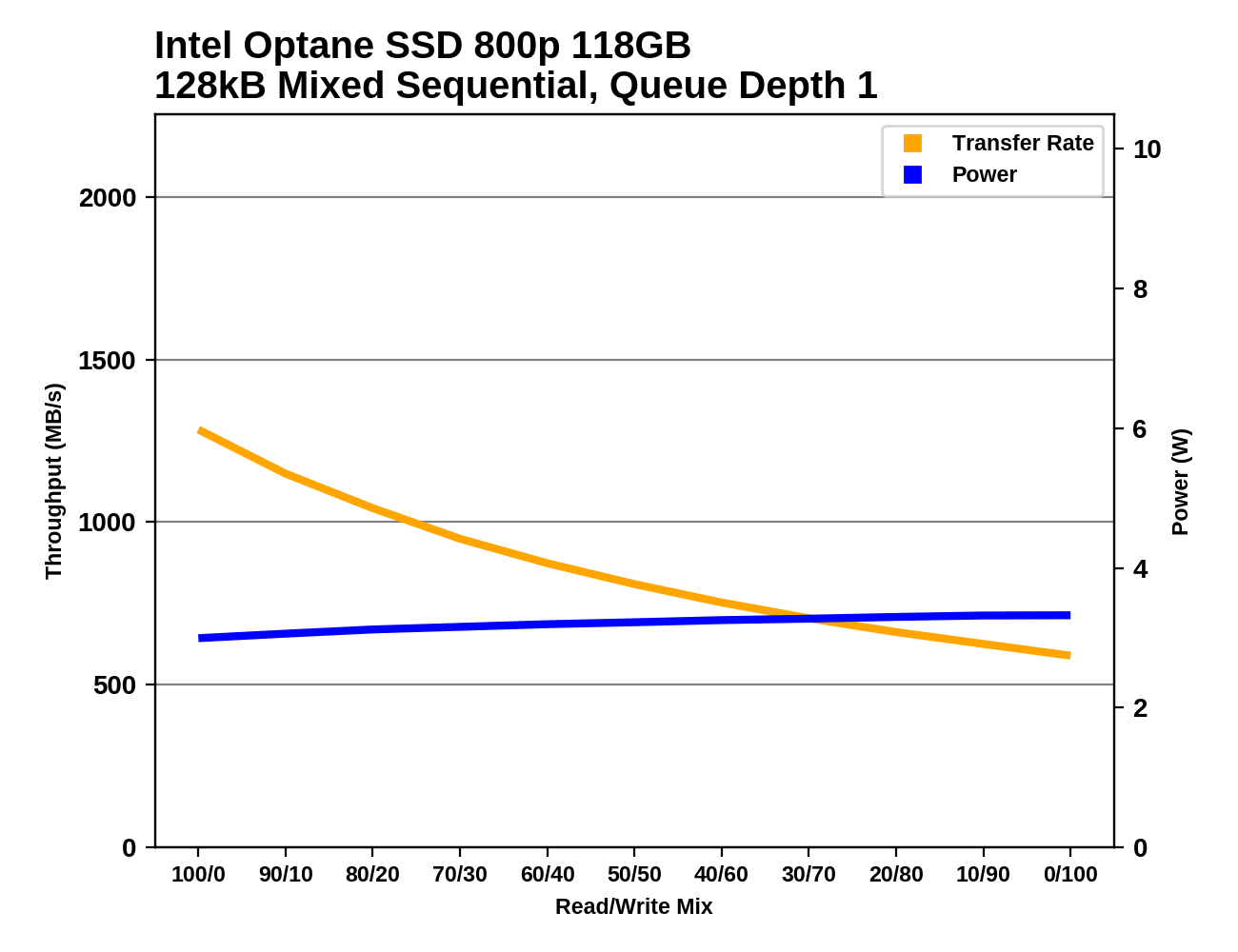 |
|||||||||
As with the mixed random I/O test, the Intel Optane SSD 800p shows a steady decline inn performance as more writes are added to the mix. The decline is steeper than the one shown by the 900p. Power consumption increases very slightly over the course of the test but still stays within the rated maximum.
Power Management
Real-world client storage workloads leave SSDs idle most of the time, so the active power measurements presented earlier in this review only account for a small part of what determines a drive's suitability for battery-powered use. Especially under light use, the power efficiency of a SSD is determined mostly be how well it can save power when idle.
SATA SSDs are tested with SATA link power management disabled to measure their active idle power draw, and with it enabled for the deeper idle power consumption score and the idle wake-up latency test. Our testbed, like any ordinary desktop system, cannot trigger the deepest DevSleep idle state.
Idle power management for NVMe SSDs is far more complicated than for SATA SSDs. NVMe SSDs can support several different idle power states, and through the Autonomous Power State Transition (APST) feature the operating system can set a drive's policy for when to drop down to a lower power state. There is typically a tradeoff in that lower-power states take longer to enter and wake up from, so the choice about what power states to use may differ for desktop and notebooks.
We report two idle power measurements. Active idle is representative of a typical desktop, where none of the advanced PCIe link or NVMe power saving features are enabled and the drive is immediately ready to process new commands. The idle power consumption metric is measured with PCIe Active State Power Management L1.2 state enabled and NVMe APST enabled.
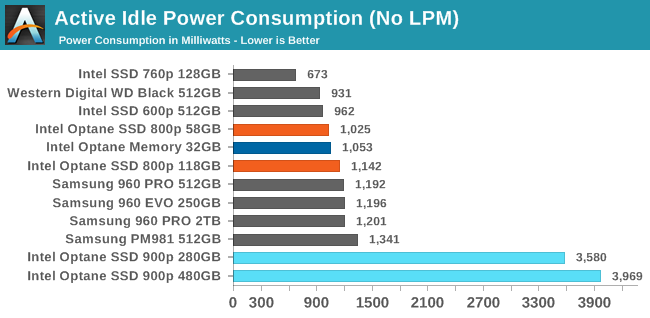
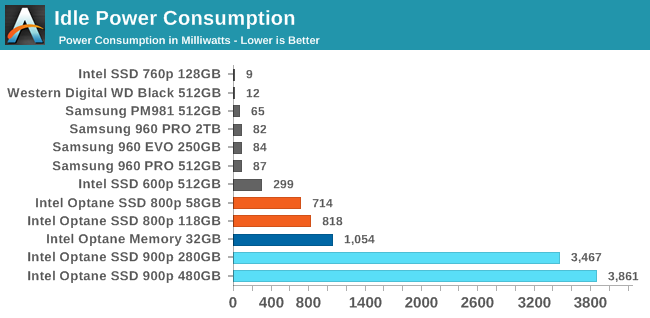
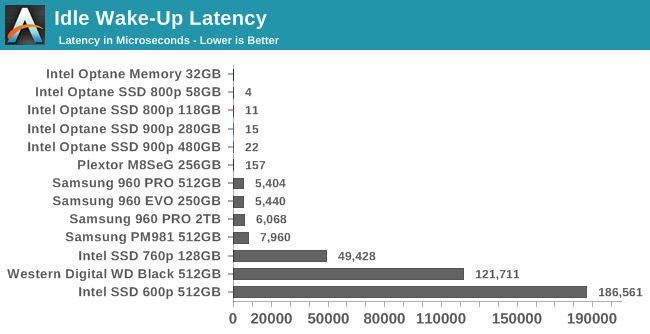
The Optane SSD 800p has a bit of an unusual suite of power management capabilities. Previous Optane products have not implemented any low-power sleep states, giving them quite high idle power consumption but entirely avoiding the problem of latency waking up from a sleep state. The 800p implements a single low-power sleep state, while most NVMe SSDs that have multiple power states have at least two or three idle states with progressively lower power consumption in exchange for higher latency to enter or leave the sleep state. On the other hand, the 800p has three tiers of active power levels, so devices with strict power or thermal limits can constrain the 800p when properly configured.
Unfortunately, our usual idle power testing method didn't work with the 800p, leading it to show only a modest reduction in power rather than a reduction of multiple orders of magnitude. This may be related to the fact that the Optane SSD 800p indicates that it may take over a full second to enter its idle state. This is an unusually high entry latency, and something in our system configuration is likely preventing the 800p from fully transitioning to idle. We will continue to investigate this issue. However, based on the specifications alone, it looks like the 800p could benefit from an intermediate idle state that can be accessed more quickly.
(I should mention here that the last Intel consumer SSD we reviewed, the 760p, also initially showed poor power management on our test. We were eventually able to track this down to an artifact of our test procedure, and determined that the 760p's power management was unlikely to malfunction during real-world usage. The 760p now ranks as the NVMe SSD with the lowest idle power we've measured.)
Conclusion
The Optane SSD 800p is the closest that Intel has come to offering a 3D XPoint-based product for the mainstream consumer market. Unlike the Optane Memory M.2, the 800p is available in capacities that allow it to be used as ordinary storage. Unlike the premium Optane SSD 900p, the 800p uses a form factor that is broadly supported by both desktops and notebooks, and the power consumption doesn't rule out use on battery power.
We had trouble getting the idle power management on the 800p to work with our testbed, but there's no question that the 800p is one of the most efficient SSDs under load. Its high performance at low queue depths allows the 800p to complete real-world tests as quickly as the fastest flash-based SSDs, but the power consumption of the 800p doesn't climb as high.
The Optane SSD 800p uses a PCIe 3 x2 interface, which is becoming increasingly common this year as more low-end NVMe SSDs show up. The Optane SSD 800p definitely doesn't belong in that category, but the two-lane link does cap throughput relative to the high-end NVMe SSDs that use a four-lane link. Fortunately, this bottleneck doesn't matter much to the 800p. The key strength of Optane products is their low latency, allowing high performance at low queue depths where total throughput usually doesn't come close to saturating a fast PCIe link. The PCIe x2 link used by the 800p does nothing to diminish its latency advantage.
| NVMe SSD Price Comparison | |||||
| 58GB | 118-128GB | 240-280GB | 480-512GB | ||
| Intel Optane SSD 800p | $129.00 (222¢/GB) | $199.00 (169¢/GB) | |||
| Intel Optane SSD 900p | $379.00 (135¢/GB) | $599.00 (125¢/GB) | |||
| Intel SSD 760p | $69.99 (55¢/GB) | $99.99 (39¢/GB) | $272.43 (53¢/GB) | ||
| Samsung 960 PRO | $299.99 (59¢/GB) | ||||
| Samsung 960 EVO | $119.99 (48¢/GB) | $229.99 (46¢/GB) | |||
| Plextor M9Pe | $127.38 (50¢/GB) | $215.59 (42¢/GB) | |||
| WD Black | $99.99 (39¢/GB) | $192.95 (38¢/GB) | |||
| MyDigitalSSD SBX | $59.99 (47¢/GB) | $94.99 (37¢/GB) | $159.99 (31¢/GB) | ||
The pricing on the Optane SSD 800p is a disappointment, but not entirely surprising. Small SSDs tend to have a higher price per GB than larger models. The 800p is more expensive on a per GB basis than the premium Optane SSD 900p, even though the latter uses a much larger and more expensive controller. So while the technical merits of the 800p may make it look like something approaching a mass-market product, it is actually the most expensive consumer SSD on the market.
If Intel could get the price down to the range of high-end MLC flash based drives like the Samsung 960 PRO, the 800p might be compelling for some users who are sure they don't need high capacities or who already have other SSDs to use as secondary storage with an Optane boot drive. Enthusiasts who don't want to jump all the way to the 900p or who only have M.2 slots to spare can get most of the performance benefits from the lesser Optane drive, and high-performance flash-based NVMe drives aren't available in low capacities.
For most users, the 800p still doesn't make sense to use as the only drive in a system. The 58GB model pretty much requires you to have another drive in your system, either another SSD or a hard drive being cached by the 800p (in which case, why not get the cheaper Optane Memory?). The 118GB model can more easily serve as the sole drive in a system; my personal laptop only has 128GB, and it serves most of my needs except for photo organizing and editing (for that, I have a NAS). But when a decent entry-level NVMe SSD can provide four times the capacity for about the same price, it is hard to choose the smaller drive.
With today's prices, I would almost always choose a ~500GB 3D TLC SSD over the 118GB Optane SSD 800p. At 500GB and up, even the latest SSDs with 512Gb 3D TLC NAND don't really suffer the performance penalties of being too small, so the Optane SSD 800p's performance isn't a huge boost. It's always less of a hassle when your primary drive is big enough to hold most or all of your data, and drives like the Samsung 960 EVO or Intel SSD 760p (limited availability at the moment) are fast enough.
We performed some tests of the Optane SSD 800p in RAID using Intel's Virtual RAID on CPU feature, available on their latest enthusiast and server platforms but not the mainstream desktop platform. VROC clearly adds some software overhead that subtracts from the latency advantage that is the strongest selling point for Optane SSDs. At high queue depths such as those generated by synthetic benchmarks or enterprise workloads, that overhead may be overcome by the performance advantages of a four-drive RAID-0. But for more typical interactive desktop workloads, VROC does not provide a net improvement in storage performance when used with the Optane SSD 800p. There are some peripheral benefits to performance consistency compared to a single 800p SSD, but they are unimportant. For users seeking Optane-class performance with higher capacity than the 800p, the Optane SSD 900p will be more cost effective and offer better performance.

